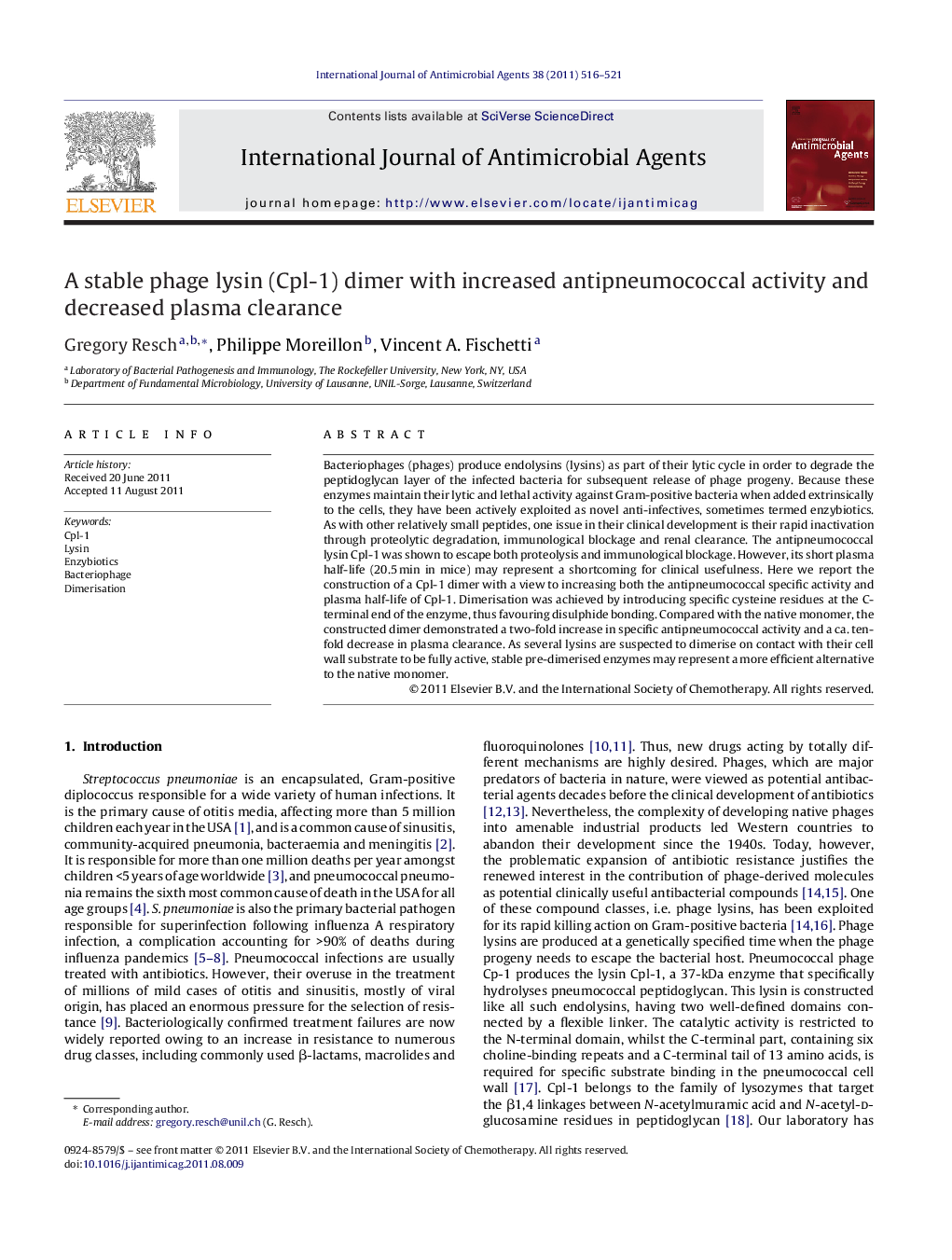| کد مقاله | کد نشریه | سال انتشار | مقاله انگلیسی | نسخه تمام متن |
|---|---|---|---|---|
| 3359364 | 1591814 | 2011 | 6 صفحه PDF | دانلود رایگان |

Bacteriophages (phages) produce endolysins (lysins) as part of their lytic cycle in order to degrade the peptidoglycan layer of the infected bacteria for subsequent release of phage progeny. Because these enzymes maintain their lytic and lethal activity against Gram-positive bacteria when added extrinsically to the cells, they have been actively exploited as novel anti-infectives, sometimes termed enzybiotics. As with other relatively small peptides, one issue in their clinical development is their rapid inactivation through proteolytic degradation, immunological blockage and renal clearance. The antipneumococcal lysin Cpl-1 was shown to escape both proteolysis and immunological blockage. However, its short plasma half-life (20.5 min in mice) may represent a shortcoming for clinical usefulness. Here we report the construction of a Cpl-1 dimer with a view to increasing both the antipneumococcal specific activity and plasma half-life of Cpl-1. Dimerisation was achieved by introducing specific cysteine residues at the C-terminal end of the enzyme, thus favouring disulphide bonding. Compared with the native monomer, the constructed dimer demonstrated a two-fold increase in specific antipneumococcal activity and a ca. ten-fold decrease in plasma clearance. As several lysins are suspected to dimerise on contact with their cell wall substrate to be fully active, stable pre-dimerised enzymes may represent a more efficient alternative to the native monomer.
Journal: International Journal of Antimicrobial Agents - Volume 38, Issue 6, December 2011, Pages 516–521